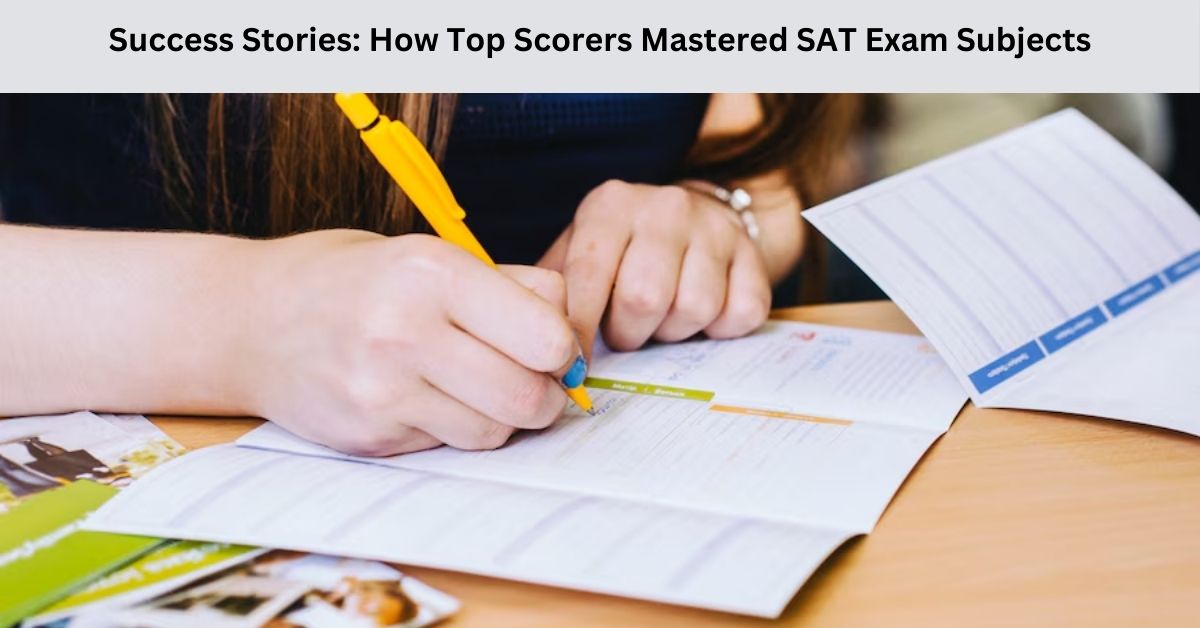Mastering the SAT exam is a significant achievement that opens doors to prestigious colleges and universities. For many top scorers, understanding the SAT exam syllabus and developing effective study strategies were crucial steps in their success. This article shares the insights and techniques used by high achievers to excel in the SAT Exam Syllabus, providing valuable lessons for anyone preparing for this important test.
Understanding the SAT Exam Syllabus
The SAT exam syllabus consists of three main sections: Evidence-Based Reading and Writing (EBRW), Math, and an optional Essay. Each section evaluates a different set of skills:
-
Evidence-Based Reading and Writing: This section tests reading comprehension, grammar, and language usage. It includes reading passages from various genres and editing texts for clarity and accuracy.
-
Math: This section covers a range of topics including algebra, geometry, statistics, and some advanced math concepts. It is divided into two parts: one that allows the use of a calculator and one that does not.
-
Essay (Optional): This section assesses the ability to read a passage and write an analysis of the author’s argument. Though optional, some colleges require it.
Top scorers have shared their strategies for mastering these subjects, highlighting the importance of a thorough understanding of the SAT exam syllabus and focused preparation.
Effective Study Techniques from Top Scorers
-
Start Early and Create a Study Plan
One common theme among top scorers is the importance of starting early. High achievers often begin their preparation months in advance, allowing ample time to cover the entire SAT exam syllabus. They create detailed study plans that break down their preparation into manageable chunks, ensuring consistent progress without last-minute cramming.
-
Utilize High-Quality Study Materials
Top scorers invest in high-quality study materials. Official SAT practice tests, prep books, and online resources are popular choices. These materials provide a comprehensive overview of the SAT exam syllabus and offer practice questions that mimic the actual test. Many successful students also recommend using Khan Academy’s free SAT prep program, which is officially partnered with the College Board.
-
Practice with Realistic Mock Tests
Taking full-length practice tests under timed conditions is a strategy that many top scorers swear by. These mock tests help students familiarize themselves with the test format and timing, identify their strengths and weaknesses, and build endurance for the actual exam. Reviewing mistakes from these practice tests is crucial, as it helps pinpoint areas that need improvement.
-
Focus on Weak Areas
Top scorers don’t just practice what they already know well; they pay special attention to their weak areas. For instance, if a student struggles with the no-calculator math section, they might dedicate extra time to practicing those types of problems. This targeted approach ensures balanced improvement across all sections of the SAT exam syllabus.
-
Master Test-Taking Strategies
Understanding the content is important, but mastering test-taking strategies is equally crucial. Top scorers learn to manage their time effectively, make educated guesses when necessary, and approach different types of questions strategically. For example, in the reading section, many successful students read the questions before the passage to know what to look for while reading.
-
Consistent Vocabulary Building
For the EBRW section, a strong vocabulary is essential. Top scorers often engage in regular vocabulary building exercises. This can include using flashcards, apps like Quizlet, or reading a wide range of literature to encounter new words in context. A robust vocabulary helps in quickly understanding and answering reading and writing questions.
-
Stay Balanced and Manage Stress
Balancing rigorous SAT prep with other responsibilities and managing stress is another key to success. Top scorers ensure they get adequate sleep, exercise regularly, and take breaks to avoid burnout. Mindfulness techniques such as meditation or deep breathing can also help manage test anxiety.
Real-Life Success Stories
-
Emma’s Journey to a 1550: Emma began her SAT prep in her junior year of high school. She used official SAT practice tests and focused on improving her weak areas, particularly in math. Emma took a practice test every two weeks, reviewed her mistakes thoroughly, and used online resources to clarify difficult concepts. Her disciplined approach paid off with an impressive score of 1550.
-
John’s Balanced Study Approach: John, a high school senior, balanced his SAT prep with sports and extracurricular activities. He created a study plan that allowed him to study in short, focused sessions. John used a variety of prep books and found Khan Academy’s personalized practice especially helpful. By consistently working on his weak points and managing his time well, John achieved a score of 1520.
-
Sophia’s Vocabulary Building Strategy: Sophia excelled in the EBRW section by dedicating time each day to vocabulary building. She read extensively, used flashcards, and practiced writing essays regularly. Her thorough understanding of the SAT exam syllabus and her strategic approach to test-taking helped her score 1540.
Conclusion
Mastering the SAT Exam Subjects requires a combination of early preparation, high-quality study materials, realistic practice, and effective test-taking strategies. By understanding the SAT exam syllabus and learning from the success stories of top scorers, you can develop a study plan that maximizes your strengths and addresses your weaknesses. With dedication and the right approach, achieving a high score on the SAT is well within reach.









